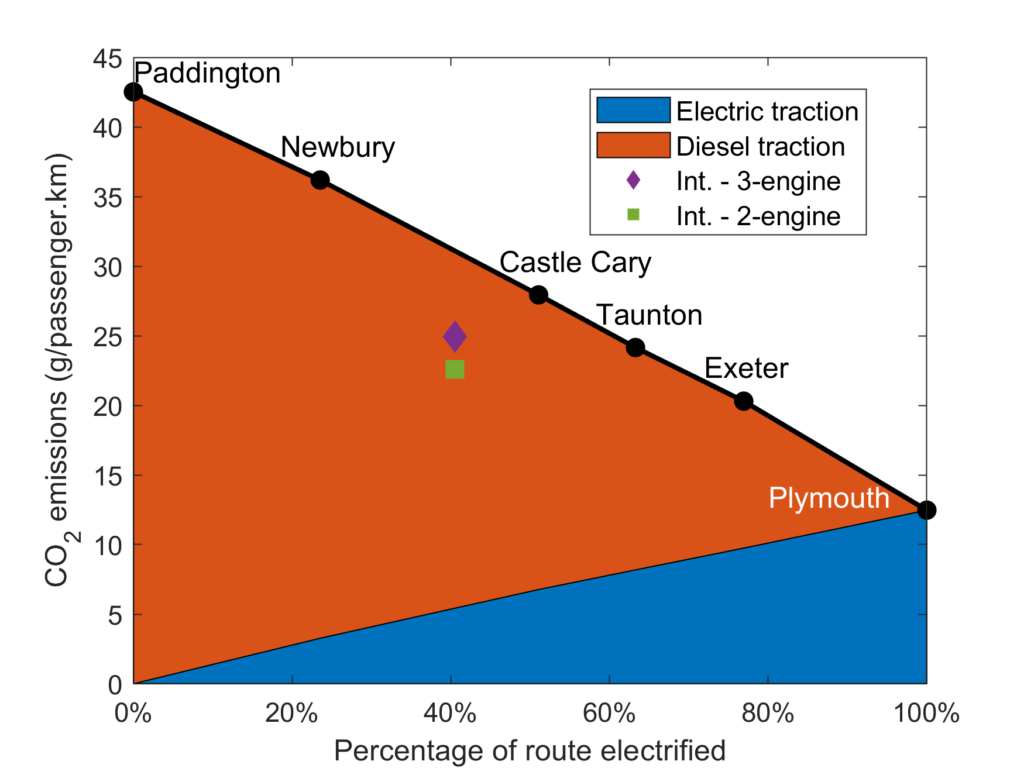The Proceedings of the Institution of Mechanical Engineers, Part F: Journal of Rail and Rapid Transit has published a new article of mine, entitled Development and control of a rail vehicle model to reduce energy consumption and carbon dioxide emissions. The paper is open-access and freely downloadable.
Paper Overview
We made a detailed model of a bi-mode rail vehicle and used control to reduce its carbon emissions (decarbonisation).
The Rail Vehicle Model
A bi-mode train is one that can run on electricity from overhead wires (sometimes called overhead line equipment or OLE), or by generating electricity from the on-board diesel generator. Then we used vehicle data to make sure the model represented the behaviour of the real train.
Control for Decarbonisation
We used that model to look at a range of controllers for reducing the CO2 emitted by the train (decarbonisation) during its run from London Paddington to Plymouth in the UK. Our controller reduced the CO2 emissions of the train by 19%. Without this controller, the train produces around 42g of CO2 per passenger-kilometre of diesel running.
Intermittent Electrification
We also investigated some simple ‘intermittent electrification’, where only some sections the route are electrified. (Some people also call this discontinuous or discrete electrification.) You can see the results of this analysis in the picture, below.

The figure shows that intermittent electrification can be more effective than continuous electrification at reducing carbon dioxide emissions. It also shows that selective engine shutdown can be used for the decarbonisation of a bi-mode rail vehicle.
If you’d like more information on my work on railway decarbonisation, check out the project webpage, or get in touch!
Funding
This project was generously funded by the RSSB (project COF-IPS-02). We would also like to thank Hitachi Rail, Angel Trains, Great Western Railway and Chiltern Railways for their support.